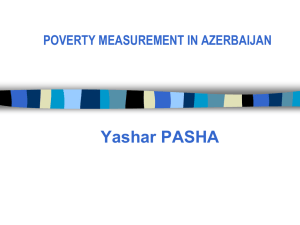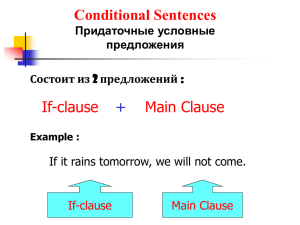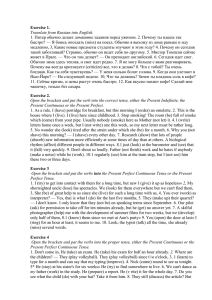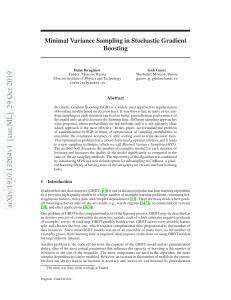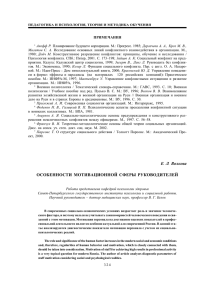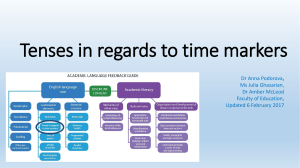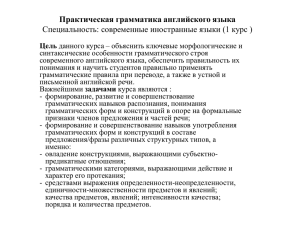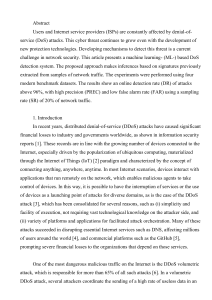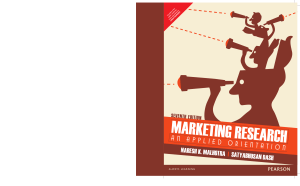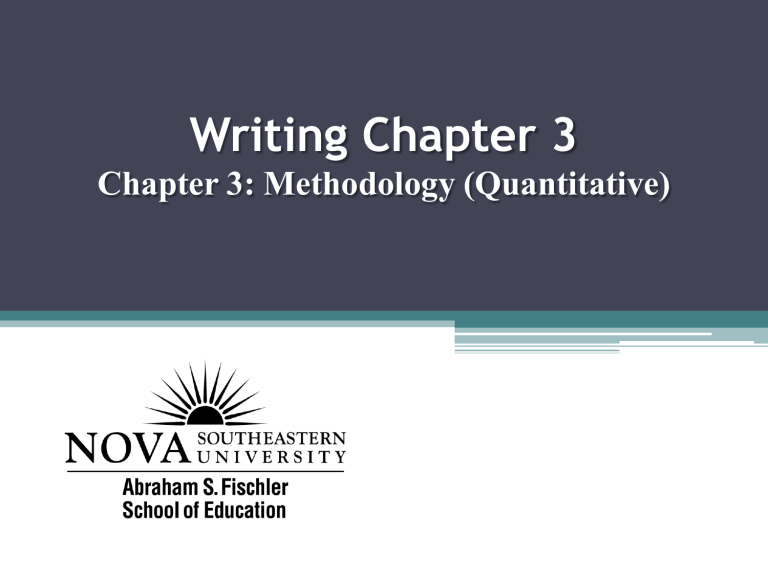
Writing Chapter 3 Chapter 3: Methodology (Quantitative) Components of Chapter 3 • Participants • Instruments • Procedures ▫ Design • Data Analysis • Limitations Future or Paste tense? • Concept Paper and Proposals ▫ Future Tense • Final Report ▫ Past Tense Participants • Target population and the sample that you will use for generalizing about the target population. • Demographic information such as age, gender, and ethnicity of your sample. • Procedures for selecting the sample should be outlined, including justification for the sampling method, also known as Sampling Procedures. Population and Sample • A population is a group of individuals that have the same characteristic(s). • A sample is a subgroup of the target population that the researcher plans to study for the purpose of making generalizations about the target population. ▫ Samples are only estimates. ▫ The difference between the sample estimate and the true population is the “sampling error.” Sample is Derived from the Population Sample Population Sample Population (examples) 1. All radiologist 2. All online College students in all community colleges 3. Adult educators in all schools of education Sample (examples) 1. Radiologist at Jackson Hospital 2. Students in Broward community college 3. Adult educators in five schools of education in the Midwest Demographics • age, gender, and ethnicity (if relevant) • The general sample was composed of 223 participants (168 male, 55 female; Mage = 14.55 years; SD = 1.55; age range, 10-18 years). Participants were divided by race (43.1% White, 53.8% Black, and 3.1% other races) ▫ Note: This example is written in past tense but should be written in future tense for the concept and proposal. Also, the details of the demographics will be unknown at these stages, therefore, estimates are acceptable. Sampling Procedures • Probability sampling is the selection of individuals from the population so that they are representative of the population. • Nonprobability sampling is the selection of participants because they are available, convenient, or represent some characteristic the investigator wants to study. Quantitative Sampling Procedures Probability Sampling Simple Systematic Stratified Multistage Random Sampling Sampling Cluster Sampling Sampling Nonprobability Sampling Convenience Sampling Snowball Sampling Instruments • This section should include the instruments you plan on using to measure the variables in the research questions. • (a) the source or developers of the instrument • (b) validity and reliability information • (c) information on how it was normed • (d) other salient information (e.g., number of items in each scale, subscales, etc.). Example Research Question What is the relationship between stress and achievement? • Perceived Stress Scale (PSS; Cohen, Kamarck, & Mermelstein, 1983). The PSS is a 10-item inventory used to assess the degree to which participants appraise their life as stressful within the past month. More specifically, respondents indicate how uncontrollable, unpredictable, and overloaded their lives are and their current level of experienced stress. The PSS is a widely used instrument for measuring the perception of stress, and is commonly used in health-related research (Broadbent et al., 2003) Example Research Question What is the relationship between stress and achievement? • Wide Range Achievement Test, Third Edition (WRAT-III). The WRAT-III is a brief screening measure for achievement that covers reading recognition, spelling, and arithmetic, making it a good choice for this assessment battery. Internal consistencies are very high. Median alternate forms reliabilities are above .89, and test-retest reliabilities are at least .91. Procedures • The Procedures section is based directly on the research questions. Specifically, this is the “howto” section of the study and will introduce the design of the research and how the data will be collected based on the questions of interest. • The material should be presented in a step by step fashion. • Another researcher should be able to replicate the study by reading the Procedures section without asking any questions. The Research Design • The research design is the actual structure or framework that indicates (a) the time frame(s) in which data will be collected, (b) when the intervention will be implemented (or not), and (c) how many groups will be involved (Edmonds & Kennedy, 2012). • Example Research Designs Quantitative Correlational -Explanatory design -Predictive design Survey -Cross-sectional design Between-subjects -pre- and posttest design Example Quantitative Research Question What is the relationship between stress and achievement? Variables Participants (N = x) Stress The Perceived Stress Scale (PSS) Achievement The Wide Range Achievement Test (WRAT-III) Design. Non-experimental research utilizing a correlational (observational) approach with an explanatory design. Correlational Approach with an Explanatory Design • (a) the time frame(s) in which data will be collected – All at once • (b) when the intervention will be implemented (or not) – no intervention or treatment • (c) how many groups will be involved – one group Variables Participants (N = x) Stress The Perceived Stress Scale (PSS) Achievement The Wide Range Achievement Test (WRAT-III) Steps in the Procedures • The “how-to” section of the study Example Initially, students were asked to complete the informed consent forms. Questionnaires were then distributed and completed in English classes during the middle of the term. The PSS scale was administered to all students at the end of each period. The WRAT-III scale was then administered at the beginning of each period. Students were given as much time as needed to complete each assessment. Note: For the concept and proposal this should be in future tense. Data Analysis • These data analyses should be based on the research questions and the research design selected for the study. Specify the procedures for reducing and coding the data. For quantitative studies, subsequent data analyses should include summary descriptive statistics and inferential statistical tests. For qualitative studies, the procedures to be followed for the analyses must also be addressed Example Research Question What is the relationship between stress and achievement? • Design. Non-experimental research utilizing a correlational approach with an explanatory design. Descriptive statistical analyses were performed on the sample groups to obtain a clear understanding of the population. Measures of central tendency (means, medians, and other percentiles) and dispersion (standard deviations, ranges) were computed. Bivariate correlational analysis were conducted in order to assess the strength of direction of the relationship between stress and achievement. Note: For the concept and proposal this should be in future tense. Thank you for your Attention!

